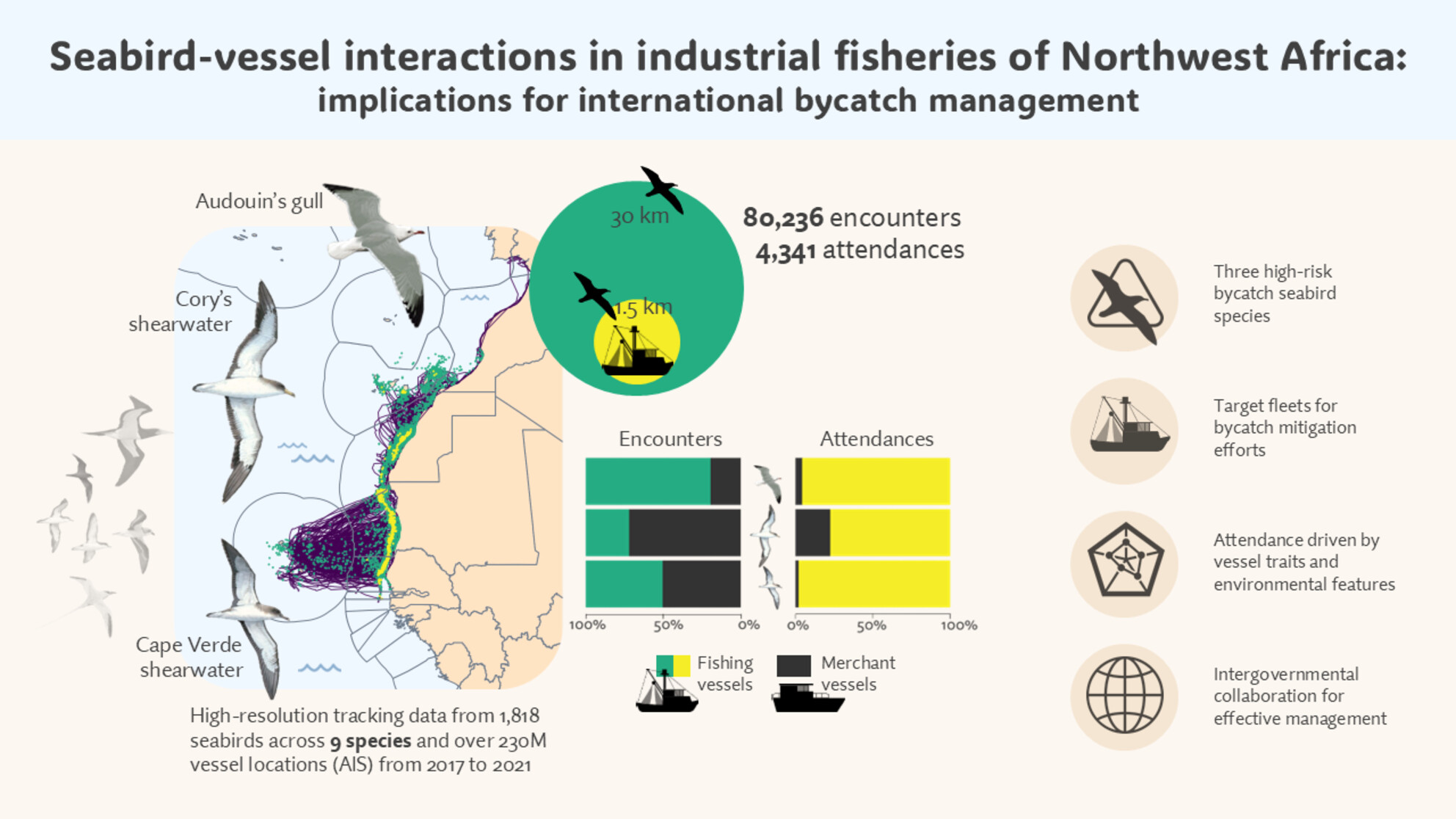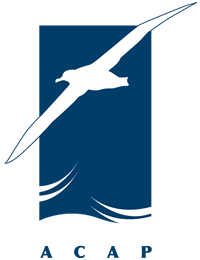
Infographic from the publication
Leia Navarro-Herrero (Departament de Biologia Evolutiva, Ecologia i Ciències Ambientals, Universitat de Barcelona, Spain) and colleagues have published open access in the Journal of Applied Ecology. “This study provides guidance for seabird conservation by identifying high-risk bycatch species and priority fishing fleets where mitigation should be targeted. It also demonstrates the potential of environmental variables to predict seabird–fishing interactions and underscores the political responsibilities essential for effective management in Northwest African waters.”
The paper’s abstract follows:
- Fisheries have been recognised as a significant global threat to seabird populations through overfishing and bycatch. Yet, seabird–fishing interactions remain understudied in West African waters despite rich seabird biodiversity and intensive fishing activity occurring in the region.
- Using high-resolution tracking data of seabirds and fishing and nonfishing vessels, we investigated the dynamics of interactions between nine seabird species and industrial fisheries in Northwest African waters. We also assessed the underlying factors (seabird breeding status; fishing vessel density, gear type, length and operational status; and environmental features) influencing seabird–fishing interactions. Furthermore, we pinpointed the relevant political stakeholders in such seabird–fishing interactions by identifying the type of fisheries, vessel nation flags and maritime zones involved.
- We found that, for each species, more than 70% of individuals encountered vessels within 30 km, with most of these encounters involving nonfishing vessels. However, Cape Verde shearwaters (Calonectris edwardsii), to a lesser extent, Cory's shearwaters (Calonectris borealis) and Audouin's gulls (Ichthyaetus audouinii) frequently approached fishing vessels within 1.5 km, exhibiting clear attending behaviour. Specifically, 66% of Cape Verde shearwaters, 27% of Cory's shearwaters and 50% of Audouin's gulls showed this close-range association with fishing vessels.
- The probability of a seabird attending a fishing vessel was influenced by specific vessel features and environmental conditions (i.e. large vessels near the coast). Furthermore, we identified a range of flags within national waters, showing that nearly 20% of the interactions involved foreign-flagged fishing vessels from Europe, Africa, Asia and Central America.
- Policy implications. This study provides guidance for seabird conservation by identifying high-risk bycatch species and priority fishing fleets where mitigation should be targeted. It also demonstrates the potential of environmental variables to predict seabird–fishing interactions and underscores the political responsibilities essential for effective management in Northwest African waters.
Reference:
Navarro-Herrero, L., March, D., Militão, T., Saldanha, S., Medrano, F., Vicente-Sastre, D., Ouled-Cheikh, J., Ramos, R., Matos, D., Rodrigues, I., Paiva, V.H., Granadeiro, J.P., Catry, P., Leal, A., Dinis, H.A., & González-Solís, J. 2025. Seabird-vessel interactions in industrial fisheries of Northwest Africa: Implications for international bycatch management. Journal of Applied Ecology DOI: 10.1111/1365-2664.70139.
John Cooper, Emeritus Information Officer, Agreement on the Conservation of Albatrosses and Petrels, 02 September 2025

 English
English  Français
Français  Español
Español